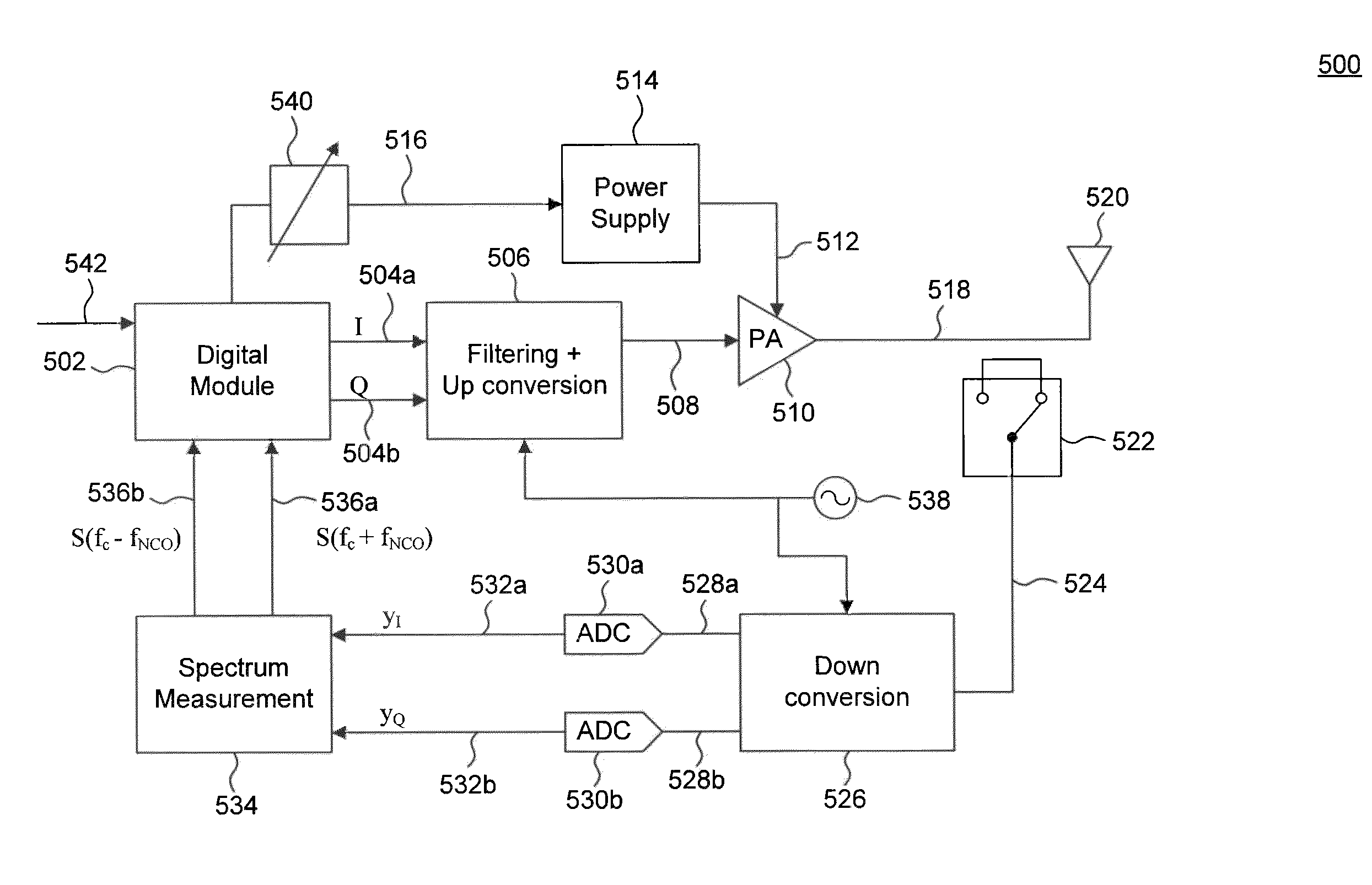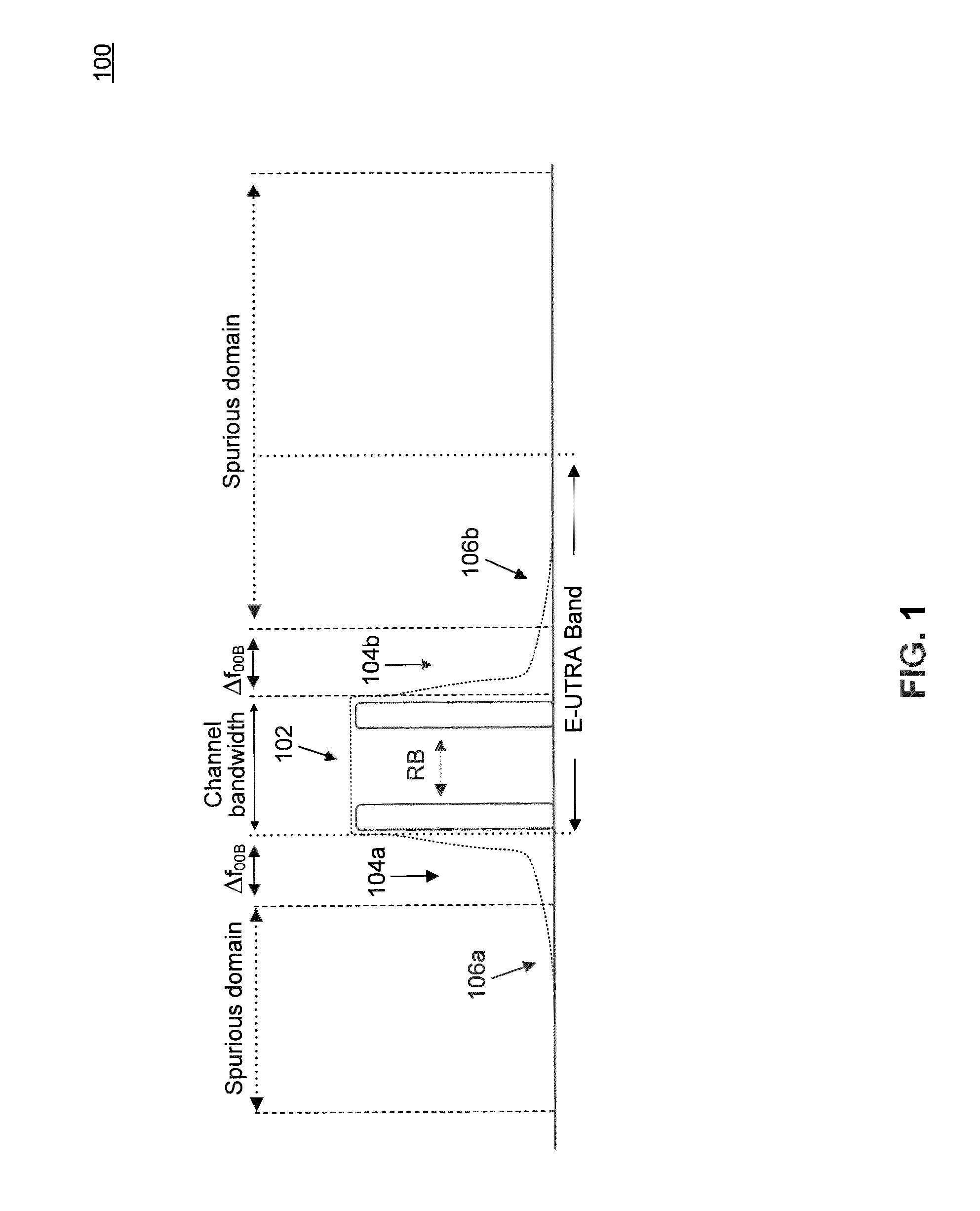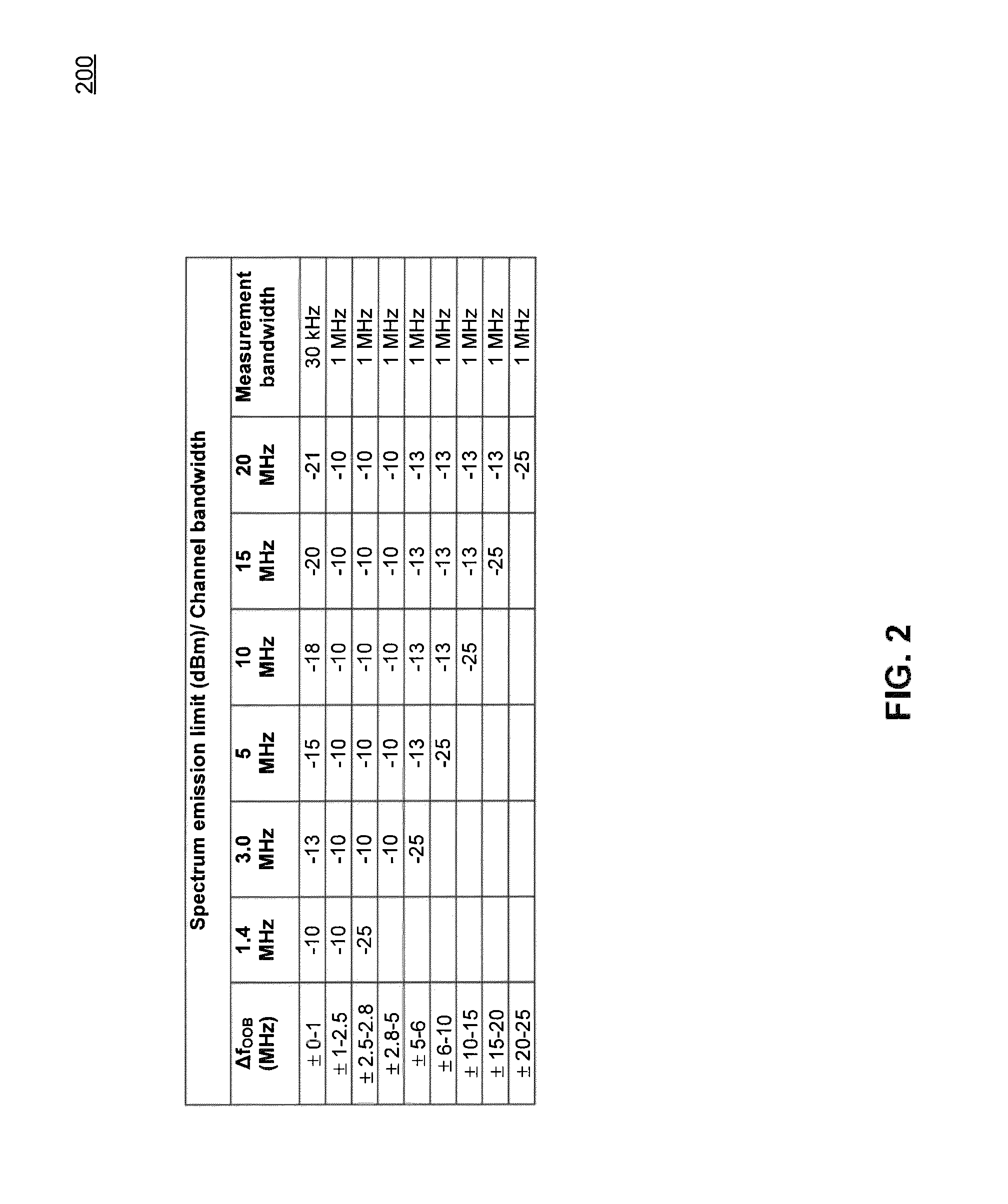Controlling a power amplifier based on transmitter output emissions
a power amplifier and output emission technology, applied in the field of radio frequency (rf) transmitters, can solve the problem of increasing the power dissipation of pa beyond the added margin
- Summary
- Abstract
- Description
- Claims
- Application Information
AI Technical Summary
Benefits of technology
Problems solved by technology
Method used
Image
Examples
Embodiment Construction
[0015]FIG. 1 illustrates an example User Equipment (UE) transmitter radio frequency (RF) spectrum 100 according to the Evolved-Universal Terrestrial Radio Access (E-UTRA) air interface standard. As shown in FIG. 1, example RF spectrum 100 consists of in-channel emissions 102, out-of-band (OOB) emissions 104a and 104b, and spurious emissions 106a and 106b.
[0016]In-channel emissions 102 include emissions that fall within the assigned E-UTRA channel bandwidth. The assigned E-UTRA channel bandwidth can be between 1.4 MHz and 20 MHz, depending on the number of resource blocks (RBs) being transmitted by the UE.
[0017]OOB emissions 104a and 104b include unwanted emissions that fall immediately outside the assigned channel bandwidth and within a ΔfOOB (MHz) interval from the upper and lower edges, respectively, of the assigned channel bandwidth. Typically, OOB emissions 104a and 104b results from the modulation process as well non-linear amplification in the UE transmitter. As further descr...
PUM
 Login to View More
Login to View More Abstract
Description
Claims
Application Information
 Login to View More
Login to View More - R&D
- Intellectual Property
- Life Sciences
- Materials
- Tech Scout
- Unparalleled Data Quality
- Higher Quality Content
- 60% Fewer Hallucinations
Browse by: Latest US Patents, China's latest patents, Technical Efficacy Thesaurus, Application Domain, Technology Topic, Popular Technical Reports.
© 2025 PatSnap. All rights reserved.Legal|Privacy policy|Modern Slavery Act Transparency Statement|Sitemap|About US| Contact US: help@patsnap.com



